Serving 872 students in grades 6-8, Arizona Middle School ranks in the bottom 50% of all schools in California for overall test scores (math proficiency is bottom 50%, and reading proficiency is bottom 50%).
The percentage of students achieving proficiency in math is 20% (which is lower than the California state average of 33%). The percentage of students achieving proficiency in reading/language arts is 36% (which is lower than the California state average of 47%).
The student:teacher ratio of 22:1 is higher than the California state level of 21:1.
Minority enrollment is 92% of the student body (majority Hispanic), which is higher than the California state average of 80% (majority Hispanic).
Quick Stats (2025)
- Grades: 6-8
- Enrollment: 872 students
- Student:Teacher Ratio: 22:1
- Minority Enrollment: 92%
- Overall Testing Rank: Bottom 50% in CA
- Math Proficiency: 20% (Btm 50%)
- Reading Proficiency: 36% (Btm 50%)
- Science Proficiency: 23% (Btm 50%)
- Source: National Center for Education Statistics (NCES), CA Dept. of Education
School Overview
Arizona Middle School's student population of 872 students has declined by 5% over five school years.
The teacher population of 39 teachers has stayed relatively flat over five school years.
Grades Offered
Grades 6-8
Total Students
872 students
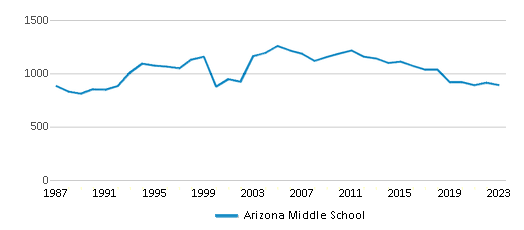
Gender %
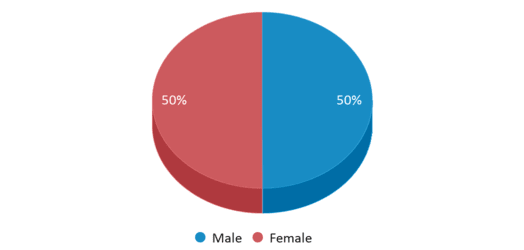
Total Classroom Teachers
39 teachers
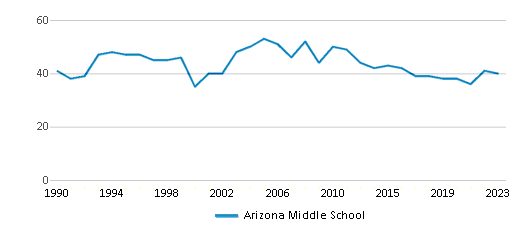
Students by Grade
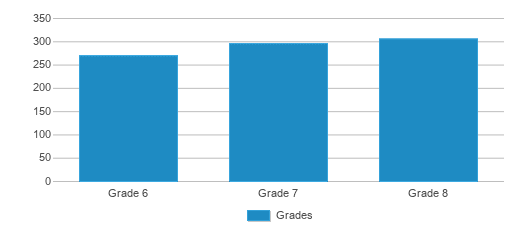
School Calendar
School Rankings
Arizona Middle School ranks within the bottom 50% of all 9,602 schools in California (based off of combined math and reading proficiency testing data).
The diversity score of Arizona Middle School is 0.37, which is less than the diversity score at state average of 0.63. The school's diversity has stayed relatively flat over five school years.
Overall Testing Rank
#6067 out of 9602 schools
(Bottom 50%)
(Bottom 50%)
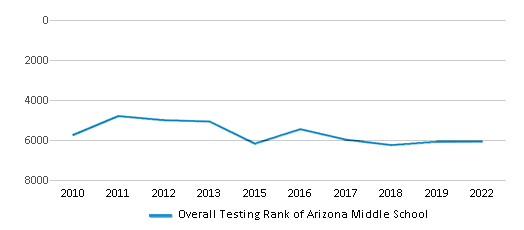
Math Test Scores (% Proficient)
20%
33%
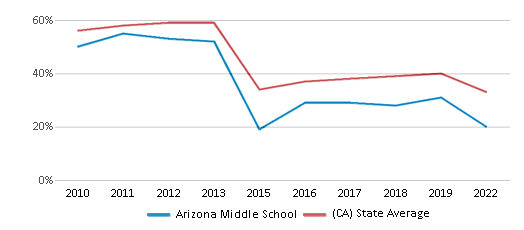
Reading/Language Arts Test Scores (% Proficient)
36%
47%
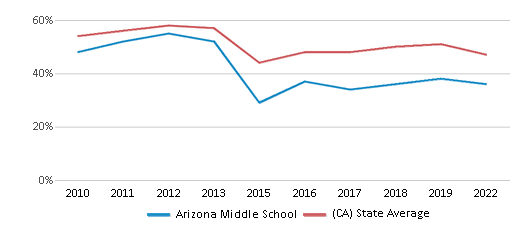
Science Test Scores (% Proficient)
23%
29%
Student : Teacher Ratio
22:1
21:1
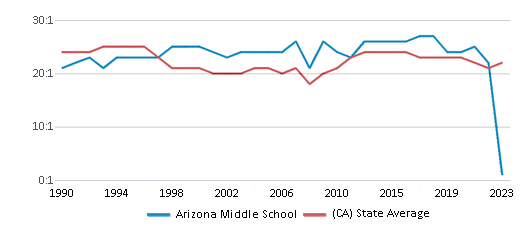
American Indian
n/a
1%

Asian
4%
12%
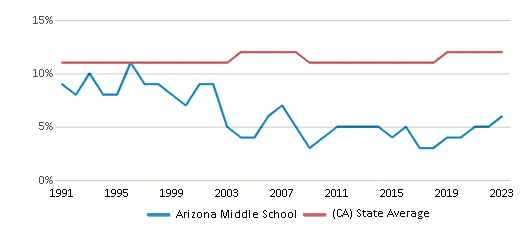
Hispanic
79%
56%
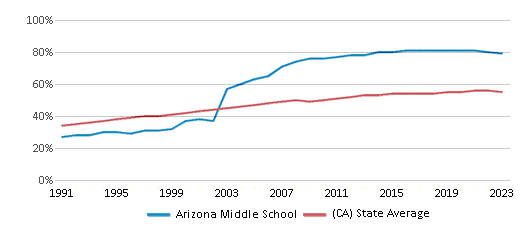
Black
7%
5%
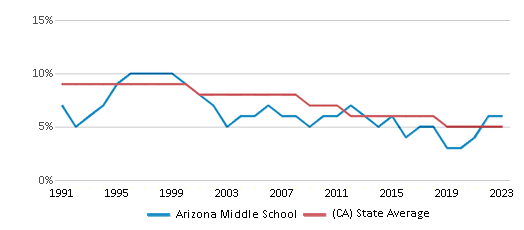
White
8%
20%
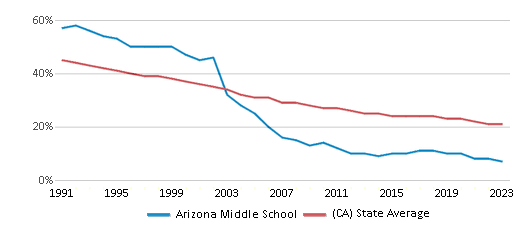
Hawaiian
1%
n/a
Two or more races
1%
6%
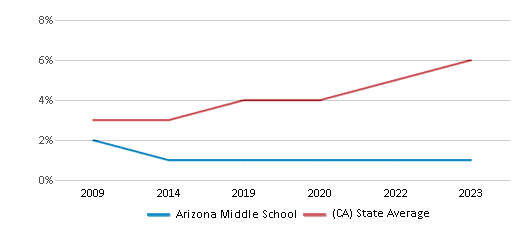
All Ethnic Groups
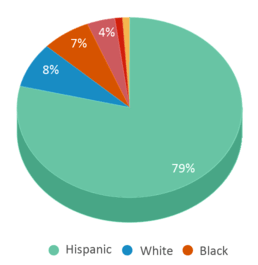
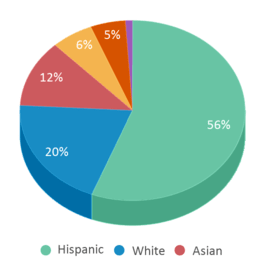
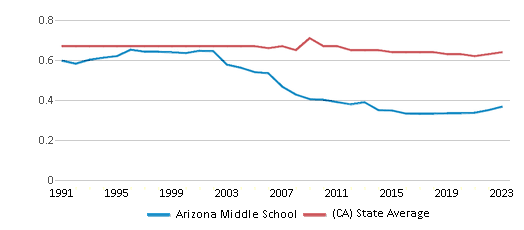
Eligible for Free Lunch
73%
54%
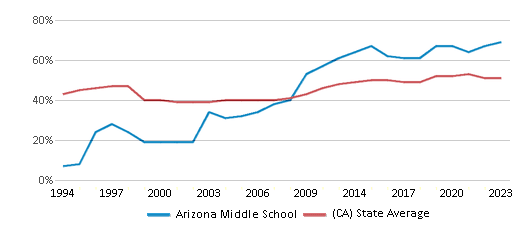
Eligible for Reduced Lunch
15%
8%
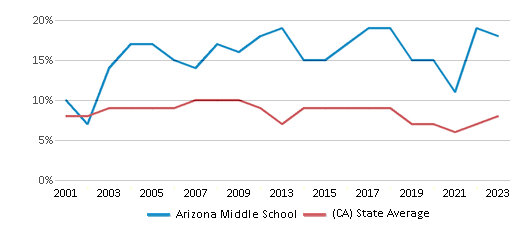
School Statewide Testing
School District Name
Source: National Center for Education Statistics (NCES), CA Dept. of Education
Frequently Asked Questions
What is Arizona Middle School's ranking?
Arizona Middle School is ranked #6067 out of 9,602 schools, which ranks it among the bottom 50% of public schools in California.
What percent of students have achieved state testing proficiency in math and reading?
20% of students have achieved math proficiency (compared to the 33% CA state average), while 36% of students have achieved reading proficiency (compared to the 47% CA state average).
How many students attend Arizona Middle School?
872 students attend Arizona Middle School.
What is the racial composition of the student body?
79% of Arizona Middle School students are Hispanic, 8% of students are White, 7% of students are Black, 4% of students are Asian, 1% of students are Hawaiian, and 1% of students are Two or more races.
What is the student:teacher ratio of Arizona Middle School?
Arizona Middle School has a student ration of 22:1, which is higher than the California state average of 21:1.
What grades does Arizona Middle School offer ?
Arizona Middle School offers enrollment in grades 6-8
What school district is Arizona Middle School part of?
Arizona Middle School is part of Alvord Unified School District.
In what neighborhood is Arizona Middle School located?
Arizona Middle School is located in the La Sierra South neighborhood of Riverside, CA. There are 3 other public schools located in La Sierra South.
School Reviews
5 4/18/2022
I had a fun time at this school. I thought the principal was very nice and seemed to be happy about being a principal. I liked all my teachers and thought the school does a good job of dealing with bullying. I do think the dress code should be less restrictive.
1 1/20/2020
Arizona Middle School In Riverside is prejudice towards children that are of different ethnic backgrounds including minorities. I would NOT recommend this school for anyone else''s child, they do not take bullying seriously. Also, my main concern was the leadership at this school needed to be changed greatly, people are not respectful in the office including the first person of contact which is the receptionist. A school should cater to children of ALL different ethnic and cultural backgrounds.Children should be able to come to school and be in an environment where they can learn, not where they are antagonized and harassed by teachers or counselors to where they don''t feel comfortable coming to school. From now on I will not be going to the school staff for my concerns about my son, I will be going straight to the school district.
Review Arizona Middle School. Reviews should be a few sentences in length. Please include any comments on:
- Quality of academic programs, teachers, and facilities
- Availability of music, art, sports and other extracurricular activities
Recent Articles
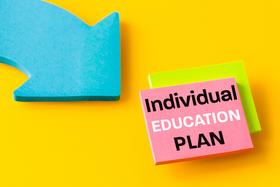
Demystifying IEPs
Unlock the power of Individualized Education Programs (IEPs) in this comprehensive guide. Discover how IEPs support students with diverse needs, including behavioral challenges. This article is a must-read for parents navigating the education system and aspiring teachers seeking to make a positive impact.

Unlocking Academic Excellence: A Guide to Advanced Placement (AP) Courses
Discover how AP courses empower students to pursue college-level studies, earn college credits, and stand out in the competitive admissions landscape.

December 16, 2024
Personalized Learning: Revolutionizing Education for the 21st CenturyExplore the revolutionary approach of Personalized Learning in K-12 education. This article discusses the benefits, challenges, and potential of tailoring education to individual student needs, incorporating technology and adaptive learning methods to prepare students for the 21st century.









